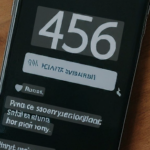The 526 area code is not assigned to any specific geographic location. Instead, it’s designated as a non-geographic area code reserved for special services, which can include things like personal communication services or other network-specific functions.
Because it’s not a standard area code tied to a city or region, you won’t find a “526 area” on a map. It’s more of a technical code used within the telecommunications infrastructure.
What is the 526 Area Code?
If you’ve received a call from a number with the 526 area code, it’s understandable to be curious about its origin. However, unlike area codes that pinpoint a specific city or state, the 526 area code is a bit of a mystery to the general public because it’s not a standard, geographically assigned code.
Under the North American Numbering Plan (NANP), which governs telephone numbers in the United States, Canada, and several other countries, the 526 area code is designated as non-geographic. This means it’s not tied to a particular location like the 212 area code is to New York City or the 310 area code is to Los Angeles.
Non-Geographic and Special Use Codes
The telecommunications world is more than just the numbers we dial every day. Behind the scenes, there are codes used for a variety of purposes. The 526 area code falls into this category. Here’s a breakdown of what that means:
- Not on the Map: You can’t point to a place and say, “That’s where the 526 area code is.” It’s used for services that aren’t dependent on a physical location.
- Technical Applications: These types of codes can be used for a range of functions, including routing calls, network testing, or for specific communication services that are not tied to a traditional phone line.
Potential for Scams and Spoofing

Because the 526 area code is not in common use and is not familiar to most people, it can be used by scammers who engage in “spoofing.” This is when a caller deliberately falsifies the information transmitted to your caller ID display to disguise their identity. They may use an unusual or unassigned area code like 526 to:
- Create Confusion: An unfamiliar area code might make you more likely to answer out of curiosity.
- Avoid Being Traced: Using a non-geographic or unassigned number can make it more difficult for authorities to track the origin of the call.
If you receive a call from the 526 area code or any other number you don’t recognize, it’s always best to be cautious. A good rule of thumb is not to answer calls from unfamiliar numbers. If the call is important, the person will leave a voicemail. Be especially wary of any caller who asks for personal information like your social security number, bank account details, or passwords.


